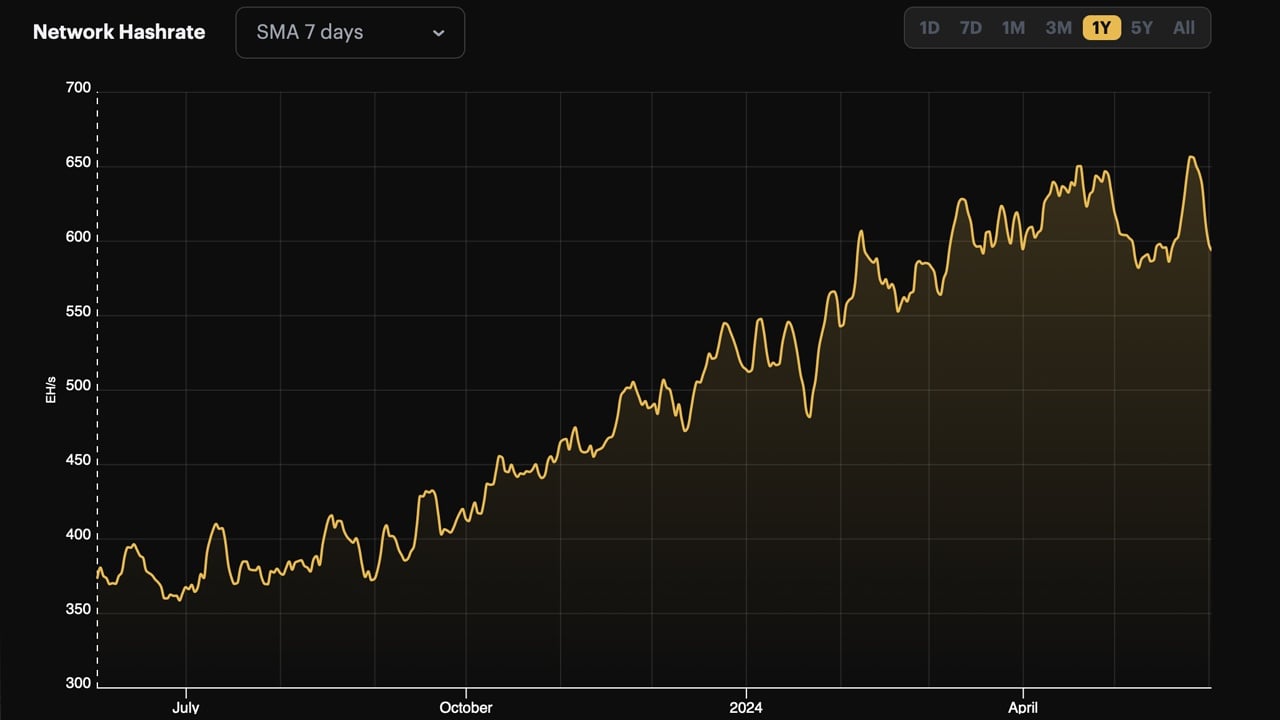Bitcoin’s hashrate has once again dipped below the 600 exahash per second (EH/s) threshold, following a brief increase in computational power on May 26. Since then, the seven-day simple moving average (SMA) shows that the network has decreased by at least 74 EH/s over the past week.
Bitcoin Network Hashrate Declines Sharply After Brief Uptick
Just a week ago, Bitcoin’s hashrate, according to the seven-day SMA, reached a lifetime peak of 656 EH/s. Today, on June 3, the network’s computational power stands at 582 EH/s after dropping by 62 EH/s.
To illustrate, if the average mining machine contributing computational power to the Bitcoin network produces an estimated 200 terahash per second (TH/s), then a loss of 74 EH/s would mean around 370,000 miners of the 200 TH/s capacity went offline.

Over the past 100 blocks, block intervals, or the time between each block mined, have been very close to the ten-minute average. The average block interval over the past 100 blocks has been approximately 9 minutes and 55 seconds.
For example, the block time between block height 846,350 mined by Antpool and block 846,351 discovered by Braiins Pool was about 10 minutes and 21 seconds. The network’s next difficulty retarget is expected on or around June 5, 2024, and based on the average over the past 2,016 blocks, a modest increase is anticipated.
At present, the network’s hashprice, or the expected value of 1 petahash per second (PH/s) of hashing power per day, is valued at $55.63. This is an improvement from the $45 range per petahash but significantly lower than before the fourth halving event.
A few factors can assist bitcoin miners besides enhancing efficiency, including an increase in BTC’s price per unit. While that alone would boost the hashprice higher, escalated fees would also add to revenue.
However, miners are currently experiencing subpar market values since BTC’s all-time high in March and much lower fees since the halving. An expected 1.61% difficulty rise, as estimated by btc.com’s difficulty data page, would not help miners much, but the difficulty would still be below the all-time high set on April 24.
Although not fully reflected yet, hashrate reduction can temporarily extend the time it takes to find the next block since the difficulty remains initially unchanged. This means if block intervals continue to rise, the expected 1.61% difficulty increase could drop to a much lower figure or even result in an overall decrease in difficulty come June 5.
What do you think about the hashrate dropping? Share your thoughts and opinions about this subject in the comments section below.
 news.bitcoin.com
news.bitcoin.com
